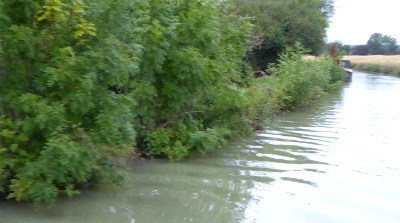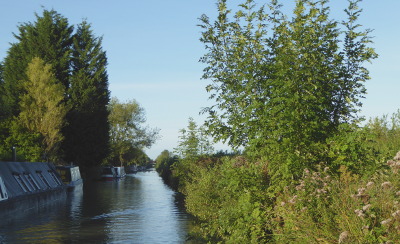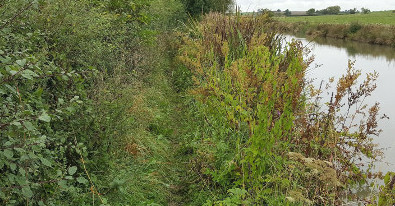THE Canal & River Trust has decided that future towpath mowing will benefit wildlife.
Following its national six months trial the trust is introducing changes to its national mowing programme, stating this new policy will ensure the needs of boaters, towpath users, anglers and others accessing the waterways are met, while increasing habitat for the wildlife that thrives along the towpaths and canal banks, including in urban areas.
 In favour of increasing habitat fringe
In favour of increasing habitat fringe
The trust tells that over the past six months it has been collecting feedback from boaters and towpath users, advisory groups, colleagues, and specialists, and has been undertaking periodic spot checks on the trial areas, which covered 375 miles (around a fifth of the Trust’s network). The majority of the feedback has been in favour of increasing the amount of habitat fringe, with certain amendments to the trust’s mowing specifications to ensure that the towpaths are suitable for all, especially boaters.
Basically this will mean that no longer will the towpath be mowed to the waters edge, though it maintains that sightlines on sharp bands will be cut to meet boaters needs and vegetation at locks and moorings will be cut most frequently to meet boaters’ needs.
 No cutting at informal moorings
No cutting at informal moorings
However there will be no general cutting along towpaths at informal moorings along a canal and the towpath fringe will be allowed to grow, though in places cut once every kilometre. There will be minimum width for the towpath walking area so the fringe width will vary rather than the width of the towpath.
The trust will seek alternative management to break up long stretches of tall vegetation, and a full width cut removing the season’s growth, including saplings, will remain.
Peter Rodriguez, Operational Projects Manager at Canal & River Trust, explains:
Benefit to flora and fauna
“A legacy from the Industrial Revolution, canals are unique ecological corridors that offer tremendous benefits to the nation’s flora and fauna by providing sanctuary to many much-loved and endangered species. Due, in part, to changes in farming practises and urban sprawl, the canal network, with its linear hedgerows and verges, provides vital connecting routes between increasingly fragmented woodlands and other important wildlife habitat, especially in urban environments.
 “Seeking to increase the amount of biodiversity across the network doesn’t mean letting everything grow; it’s about providing a mix of habitats or trying to improve a section of towpath through a specific management regime. For example, tall grasses suppress lower-growing plants. Keeping them shorter by regular mowing and collecting the clippings to reduce the amount of nutrients available for them encourages wildflowers, which prefer more nutrient-poor soils, to flourish.
“Seeking to increase the amount of biodiversity across the network doesn’t mean letting everything grow; it’s about providing a mix of habitats or trying to improve a section of towpath through a specific management regime. For example, tall grasses suppress lower-growing plants. Keeping them shorter by regular mowing and collecting the clippings to reduce the amount of nutrients available for them encourages wildflowers, which prefer more nutrient-poor soils, to flourish.
The trust however maintains that "ensuring the safety of boaters remains paramount, and the trial has formalised the navigation requirements for grass cutting at moorings, locks and sightlines on bends. It is important that we continue to receive boaters’ feedback, both positive and about where improvements could be made, so people are able to get the most enjoyment out of their time on the water.”
To give feedback, detailing the location and ideally a photo: canalrivertrust.org.uk/contact-us/ways-to-contact-us
